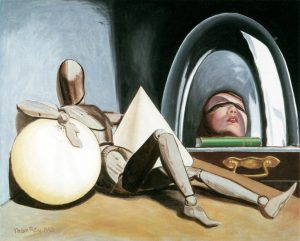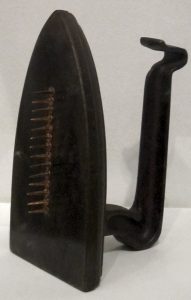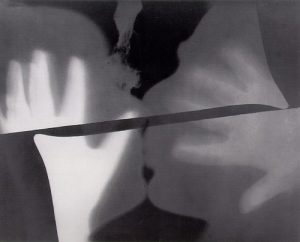Man Ray was an American avant-garde artist and leading figure in the Dada and Surrealist movements. A pioneer in film, painting, and collage, Man Ray is best known for his black-and-white photographs.

Image source: https://search.creativecommons.org/photos/f40360d9-16cc-4aa7-b6fb-096266ab14be
Man Ray was an American visual artist who spent much of his career in Paris and contributing significantly to the Dada and Surrealist movements. He produced important works, however, considering himself above all a painter. He was best known for his photography, fashion, and portrait.
Early life
Man Ray, born Emmanuel Radnitzky in 1890 in Philadelphia, Pennsylvania, was born to Jewish immigrants from Russia. Ray’s artistic and mechanical prowess emerged at an early age. His higher education provided him with a solid foundation in drawing and other artistic techniques, also thanks to regular visits to art museums, where he learned the works of Old Masters such as Leonardo da Vinci, Michelangelo, Titian, and Caravaggio. As a student, Ray was inspired by Mr. Alfred Stieglitz, whose gallery he visited regularly, as well as Mr. Robert Henri, who was his high school teacher. At the age of 25, Ray held his first personal painting fair. His 55 years of friendship with Duchamp influenced their work and led to joint creative endeavors.

Image source: https://search.creativecommons.org/photos/d5f2dbbf-ca5e-407d-8ebb-a7b177b02975 by pingnews.com
Surrealism period

Image source: https://www.flickr.com/photos/dou_ble_you/41175746260 Author: dou_ble_you
Initially, Ray was inspired by Cubism and Expressionism, but when he met Marcel Duchamp, he began to add some movement to his works, shifting his focus to Dadaism. Dadaism challenged perceptions of art and literature at the time and advocated spontaneity. Together with Duchamp and Francis Picabia, Man Ray became the leading figure of the Dada movement.
In the 1920s, influenced by the writings of the psychologist Sigmund Freud, and by Surrealism, he sought a revolution against the constraints of the rational mind; in which the rules of society were seen as oppressive. Surrealism also embraces a Marxist ideology that requires an orthodox approach to history as a product of the material interaction of collective interests, and many famous surrealists later became symbols of the 20th century Counterculture such as the Marxist Che Guevara. Man Ray was the only member of the Paris surrealist movement from the United States. Among his popular artistic works at the time was The Gift, the sculpture which had two found objects.
Dada and readymade
Man Ray abandons conventional painting to engage with Dada, a radical anti-art movement. He published two Dadaist periodicals, each of which had only one issue, The Ridgefield Gazook (1915) and TNT (1919), the latter co-edited by Adolph Wolff and Mitchell Dawson. He began creating objects and developing unique mechanical and photographic methods for creating images. For the 1918 version of Rope Dancer, he combined the spray-gun technique with a pen drawing. He too, like Duchamp, made readymades—ordinary objects that are selected and modified. His Gift readymade (1921) is iron with metal nails attached to the bottom, and Enigma of Isidore Ducasse is an invisible object (a sewing machine) wrapped in a cloth and tied with a rope. Aerograph (1919), another work from this period, was done with an airbrush on glass.

Image source: https://search.creativecommons.org/photos/04f5f777-4314-4cd5-a311-594235fffec3
Photography

Image source: https://search.creativecommons.org/photos/f71571c6-f3d6-4179-821d-14ef3396740e
Man Ray became popular thanks to the representations of his artistic works. He worked as a fashion photographer for popular magazines in Paris. During his stay in France, he created works of art now known as Rayogrammes, that is, images created on a piece of photographic paper without the use of a camera; the subject is placed directly on a piece of paper, which when exposed to light produces the image. What produces the image is the shadow of the object, this emphasizes the influence of light and shadow instead of the importance of the image itself.
Info sources: https://www.theartstory.org/artist/ray-man/ https://en.wikipedia.org/wiki/Man_Ray https://www.manray.net/ https://www.britannica.com/biography/Man-Ray http://www.artnet.com/artists/man-ray/
